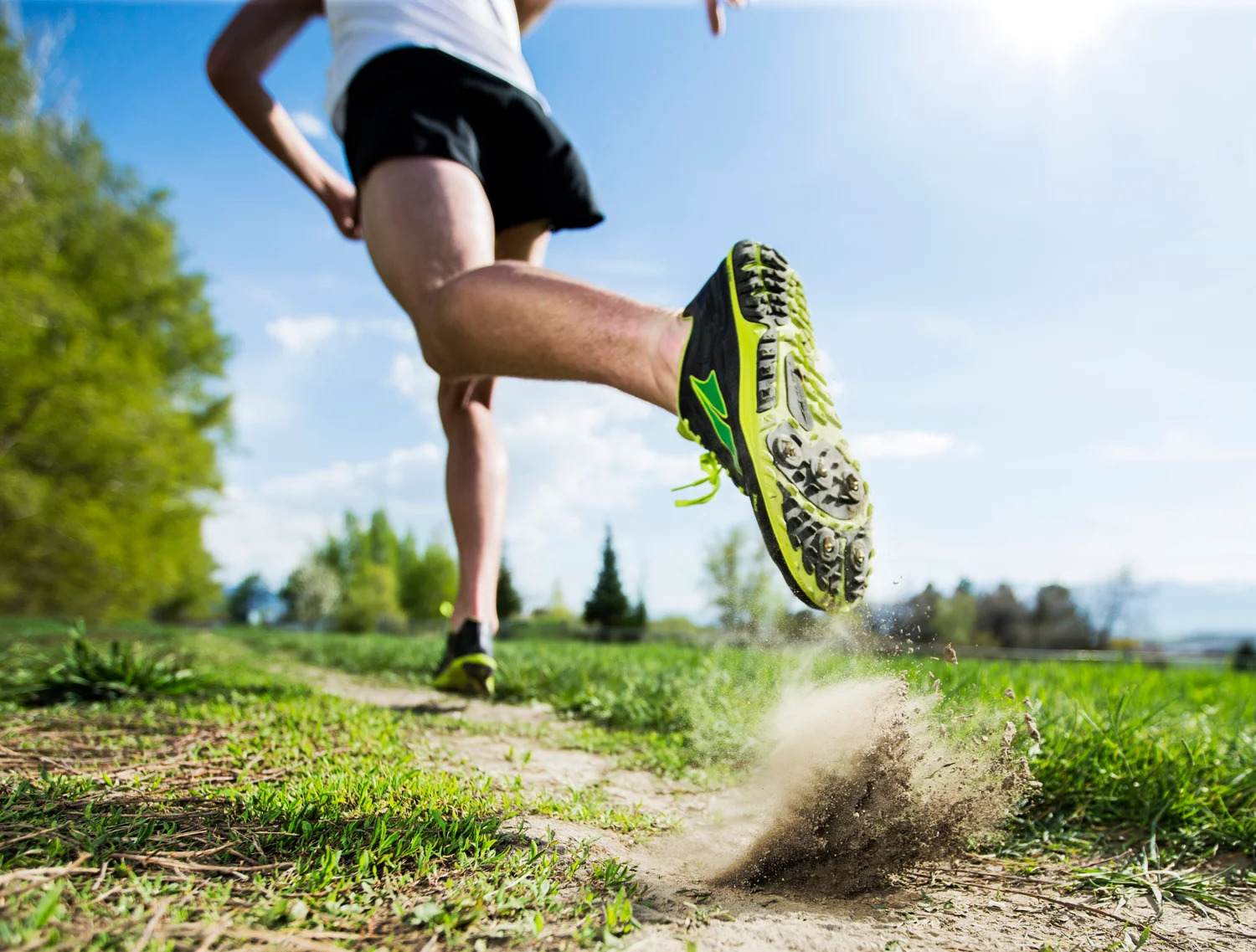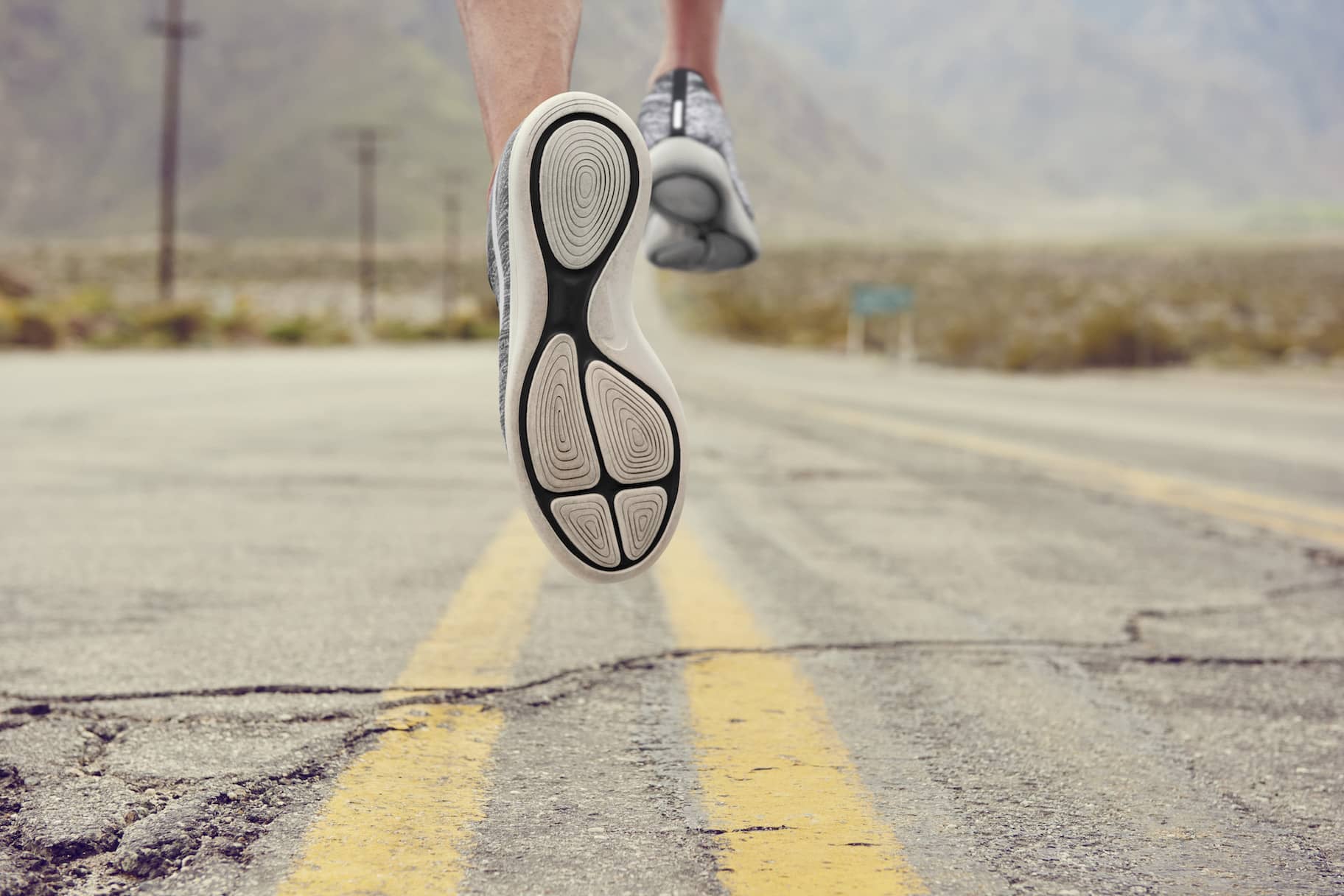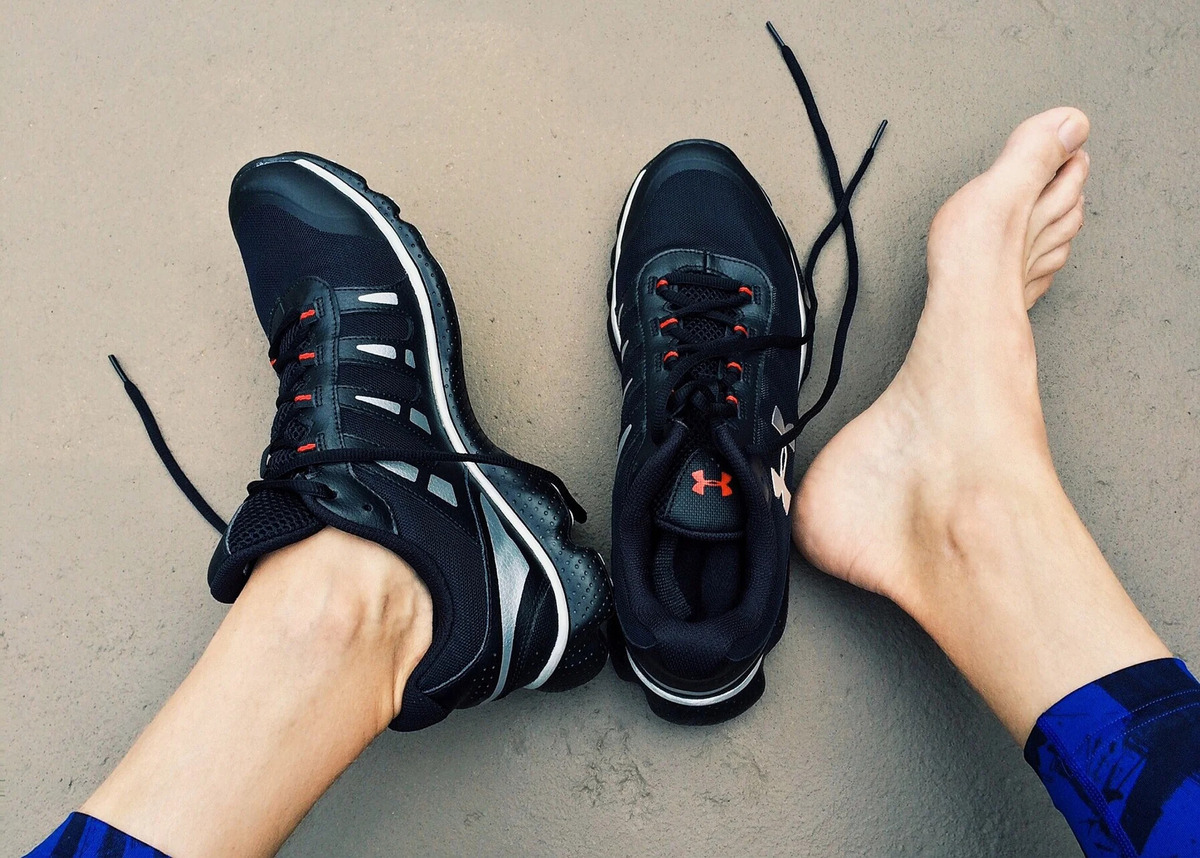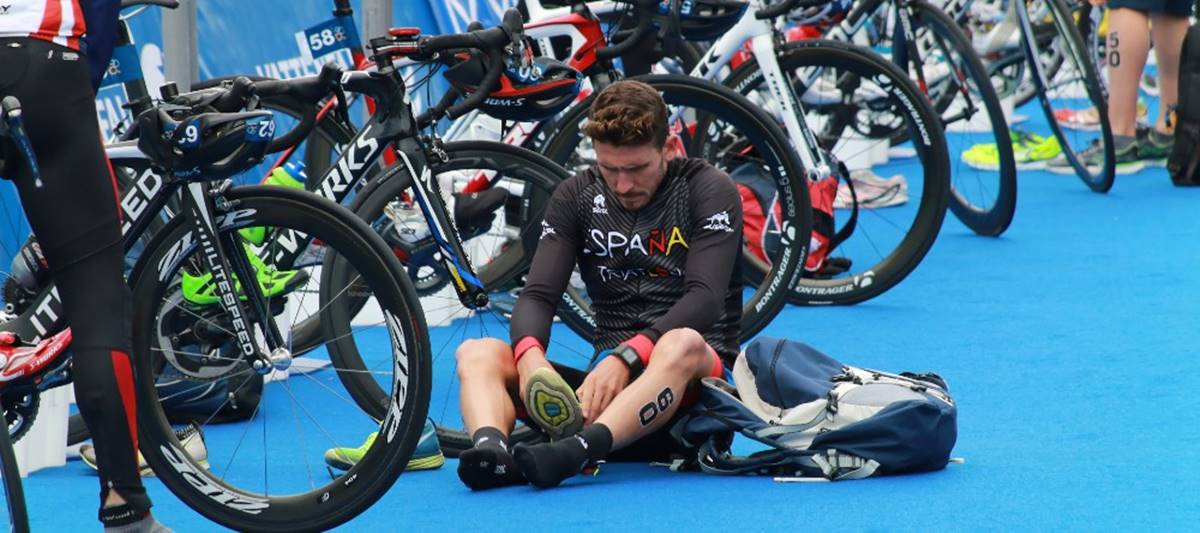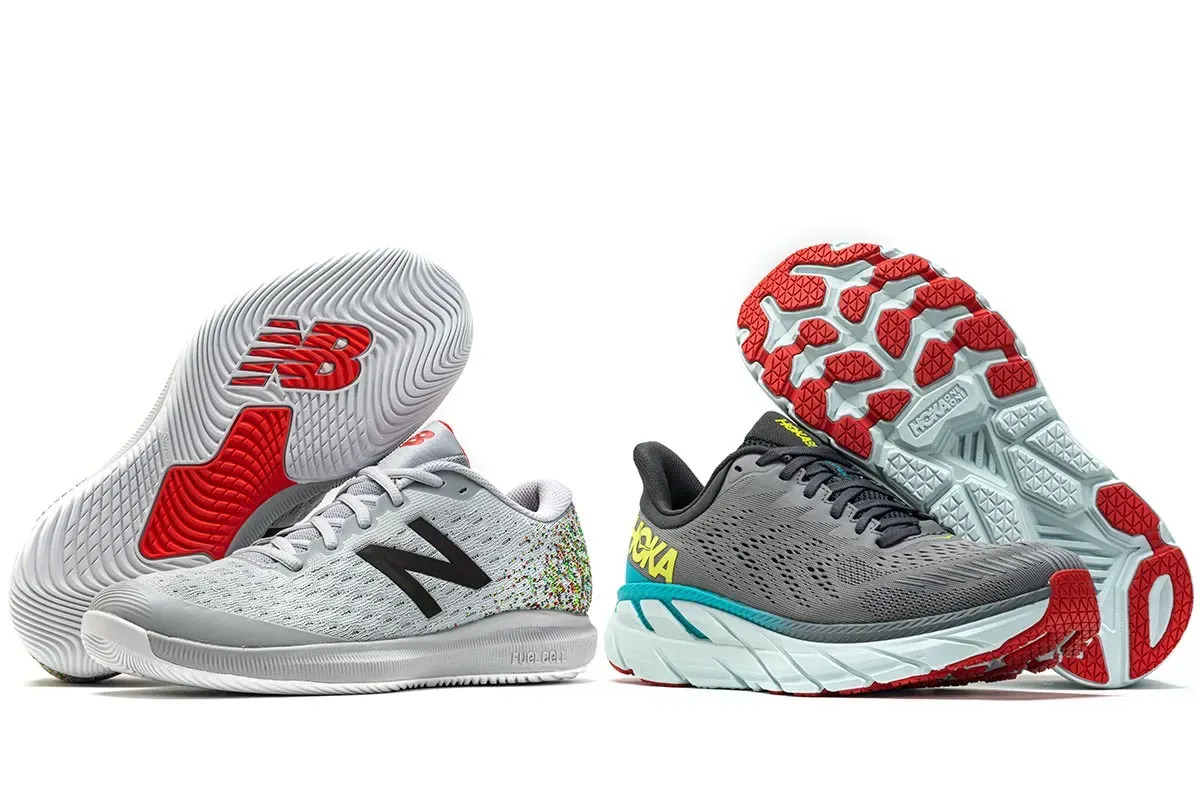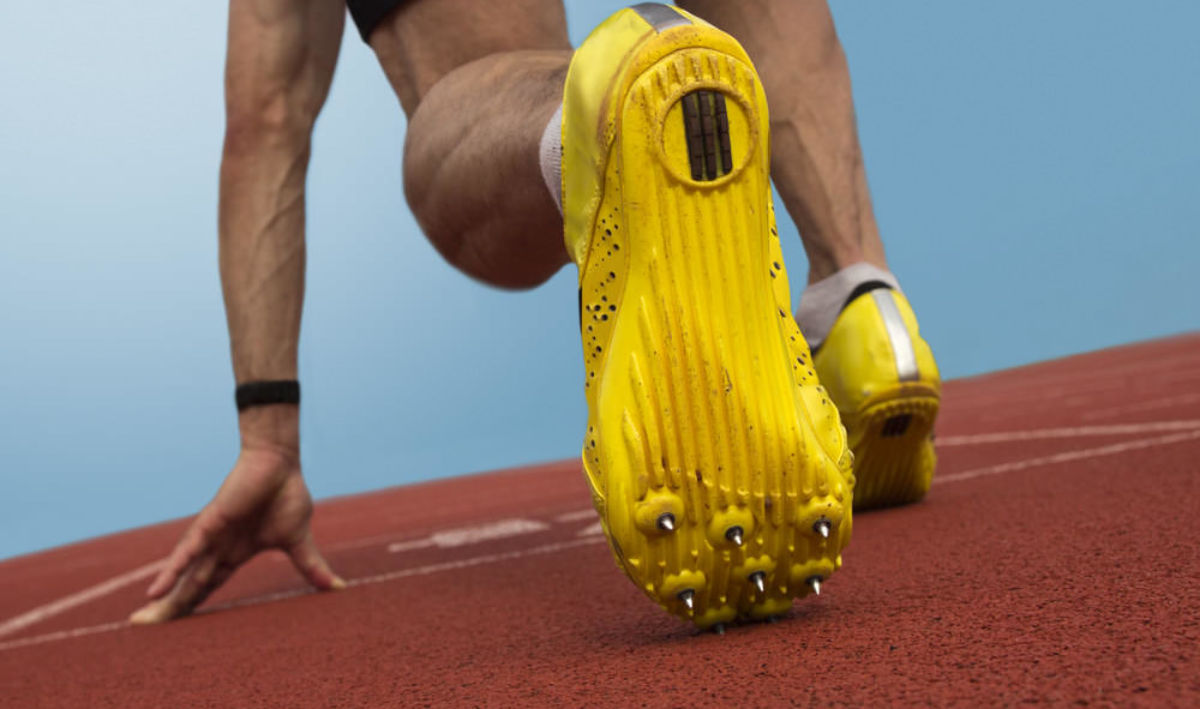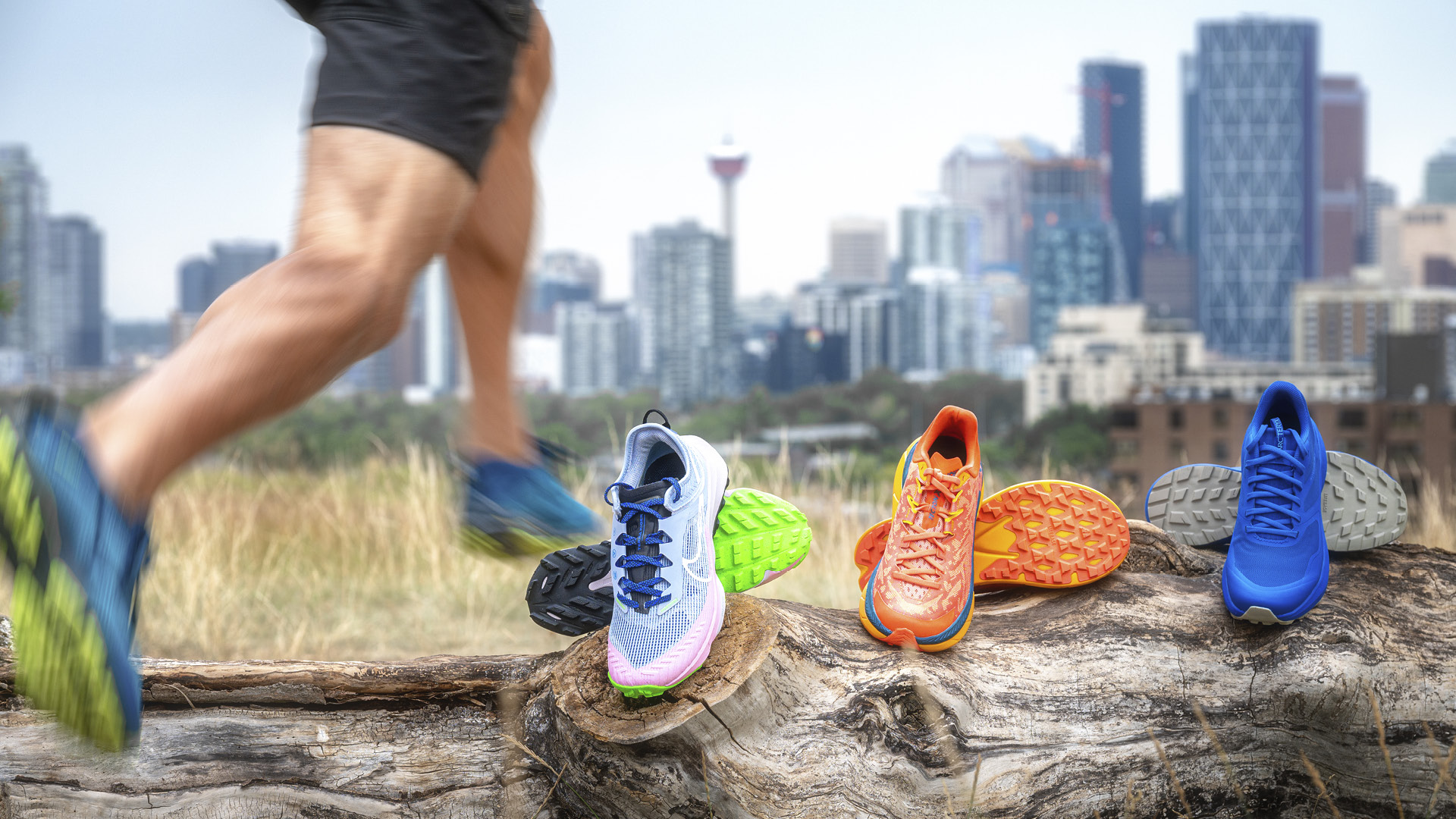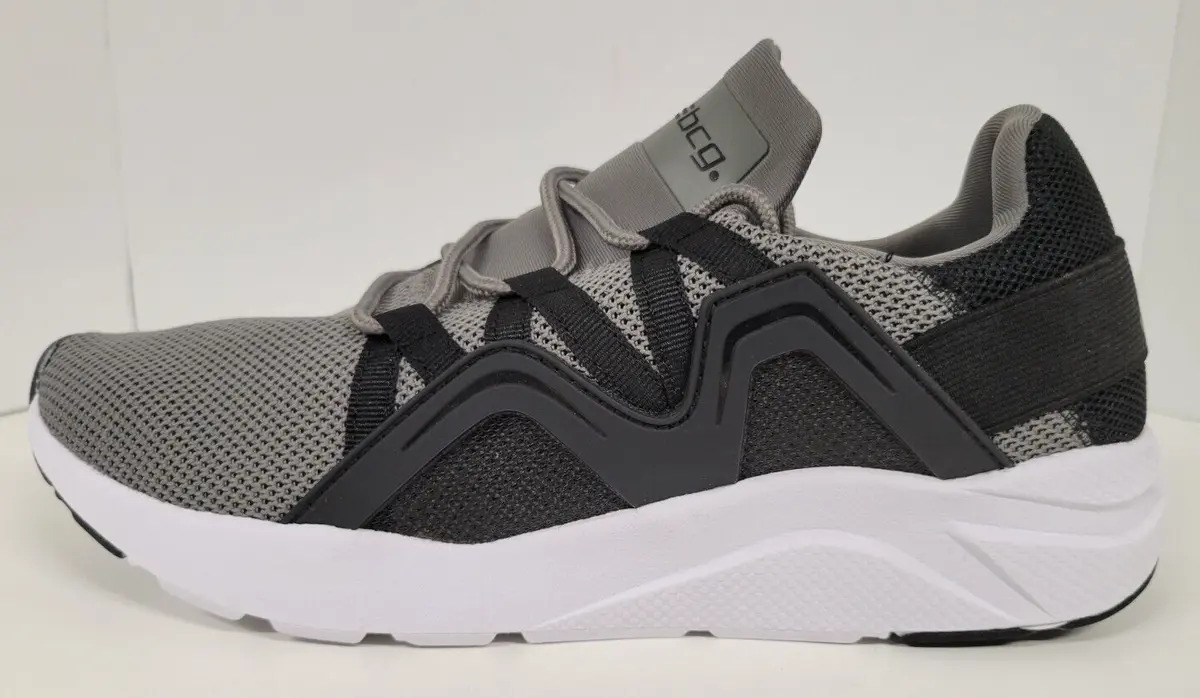Home>Misc>Featured>How To Keep Heel From Slipping In Running Shoes
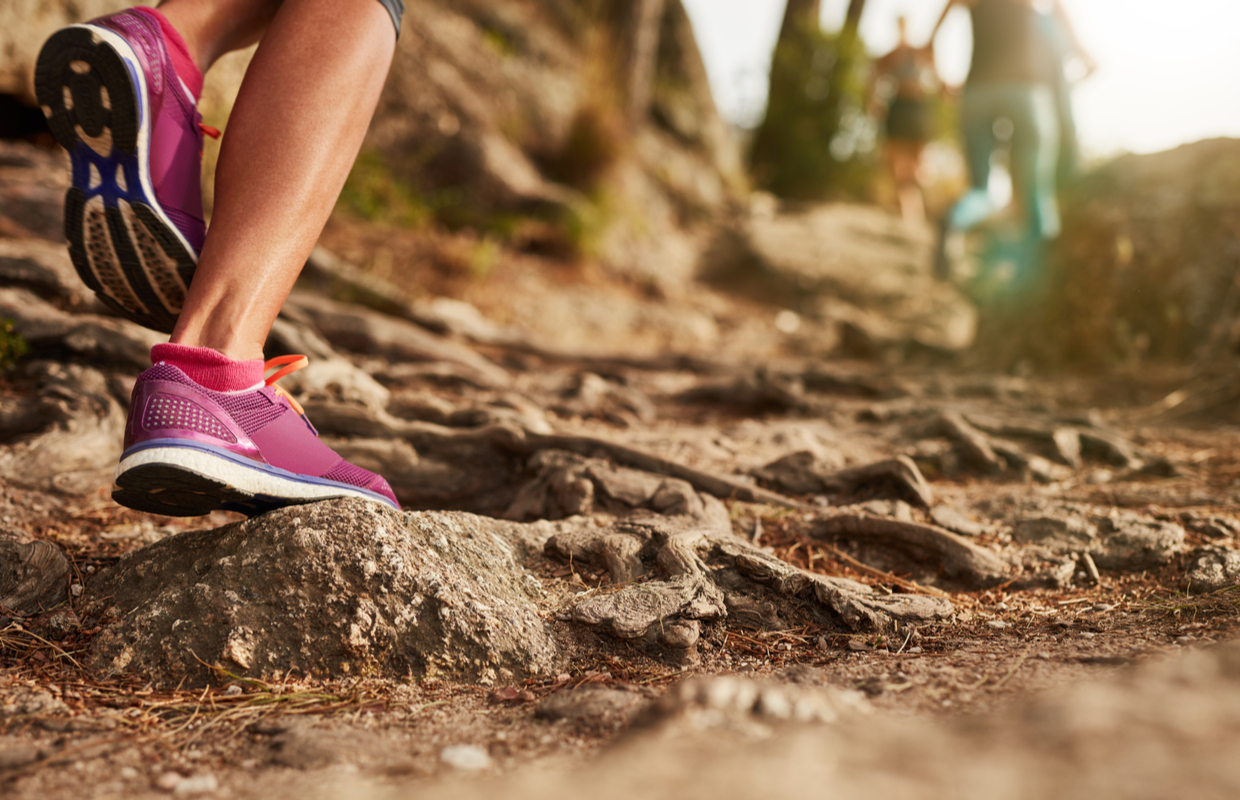

Featured
How To Keep Heel From Slipping In Running Shoes
Modified: January 22, 2024
Discover the best tips and techniques to prevent your heel from slipping in running shoes. Our featured guide will keep you comfortable and secure during your runs.
Introduction
Running is a popular form of exercise and a fantastic way to stay fit and healthy. However, nothing can put a damper on a great run like the unpleasant sensation of your heel slipping inside your running shoes. Not only is it uncomfortable, but it can also lead to blisters and other foot issues. If you’re tired of dealing with this annoyance, you’ve come to the right place.
In this article, we will explore the common problem of heel slipping in running shoes and provide you with effective solutions to keep your heel securely in place. We will delve into the factors that contribute to heel slippage, such as shoe fit and lacing techniques. Additionally, we will discuss alternative methods to prevent heel slipping, such as using insoles or cushions.
Whether you’re a seasoned runner or just starting out, it’s crucial to address heel slipping to ensure a comfortable and enjoyable running experience. Understanding the causes of this issue and implementing the right strategies can make a world of difference in your running performance.
So, if you’re ready to bid farewell to the annoyance of heel slipping and embrace a more secure and comfortable running experience, let’s dive into the solutions that will help keep your heel firmly in place in your running shoes.
Understanding the Problem
Heel slipping in running shoes is a common issue that can cause discomfort and affect your overall running experience. But why does it happen? Understanding the factors contributing to this problem can help us find effective solutions.
One of the primary causes of heel slipping is an ill-fitting running shoe. When the shoe is either too loose or too tight, your heel may slide up and down with each step. This can be particularly frustrating if you have narrow heels, as finding the right shoe with a secure fit can be challenging.
Another factor to consider is the shape and structure of your foot. Some people naturally have a more prominent heel or a higher arch, which can make it harder to find shoes that adequately support the heel and prevent slippage. Furthermore, factors such as excessive pronation (inward rolling of the foot) or supination (outward rolling of the foot) can also contribute to heel slipping.
The type of running terrain and weather conditions can also play a role in heel slipping. Running on uneven or slippery surfaces can cause your feet to move around inside the shoe, leading to slippage. Additionally, excess moisture from sweat or rain can make the feet more prone to sliding within the shoe.
It’s important to note that heel slipping is not just a matter of comfort; it can also impact your running performance and lead to foot problems. When your heel is constantly moving inside the shoe, friction and rubbing can occur, resulting in painful blisters, raw skin, or even recurring issues like plantar fasciitis.
Now that we have a better understanding of why heel slipping occurs let’s explore the solutions that can help alleviate this problem and improve your running experience.
Choosing the Right Running Shoes
When it comes to preventing heel slipping, selecting the right running shoes is crucial. Here are some factors to consider when choosing a pair that will provide a secure fit:
- Proper Fit: It’s essential to find running shoes that fit your feet properly, especially around the heel area. Ensure that the shoe snugly wraps around your heel without being too tight or too loose. Try different sizes and styles to find the perfect fit.
- Heel Counter: The heel counter is the back part of the shoe that wraps around the heel. Look for shoes with a sturdy and supportive heel counter. This will help prevent excessive movement and provide stability.
- Arch Support: Consider your foot arch type when selecting running shoes. If you have high arches, look for shoes with adequate arch support to help keep your feet in the correct alignment and reduce heel slippage.
- Cushioning and Shock Absorption: Good cushioning and shock absorption can make a significant difference in your running comfort. Look for shoes with ample cushioning in the heel area to help minimize impact and reduce the chances of your heel slipping.
- Breathability and Moisture Wicking: Opt for running shoes made from breathable materials that allow air flow and help wick away moisture. This will help keep your feet dry and reduce the risk of slippage due to sweat or wet conditions.
- Try Before You Buy: It’s always recommended to try on running shoes before making a purchase. Walk or run around the store to ensure they feel comfortable and secure on your feet, paying particular attention to the heel area.
Remember, everyone’s feet are unique, so what works for one person may not work for another. Take the time to find the running shoes that best suit your feet and provide the support needed to keep your heel from slipping.
Lacing Techniques to Prevent Heel Slippage
Proper lacing techniques can make a significant difference in preventing heel slipping and ensuring a secure fit for your running shoes. Here are a few lacing techniques you can try:
- Runner’s Loop: This technique can help anchor your heel in place. Start by creating a loop on each side of the shoe near the top eyelet. Then, thread the laces through the loops before tying them as usual. This creates an additional point of tension that helps hold your heel firmly in place.
- Heel Lock: The heel lock technique is effective in preventing heel slippage. After lacing your shoes normally, take the two loose ends of the laces and cross them over each other. Then, thread each lace end under the opposite side of the shoe, creating a loop. Pull the loops tight, and then tie your laces as usual. This technique adds extra friction around the heel, preventing it from moving in the shoe.
- Parallel Lacing: For a more customized fit, try using parallel lacing. Start by making two parallel lines with the laces on the sides of the shoe. This technique allows you to adjust the tightness differentially, tightening where needed to secure the heel without over-tightening the rest of the shoe.
- Lock Lacing: This technique helps secure the entire shoe and can prevent the foot from moving around inside. After lacing your shoes normally, create a loop with each lace and then cross them over each other. Thread each lace end through the loop on the opposite side, pulling tightly to create a secure lock. Continue lacing the remainder of the shoe and finish by tying your laces. The lock lacing technique adds extra tension throughout the shoe, providing a more secure fit.
These lacing techniques can be tried individually or combined to find the best solution for your specific foot shape and running shoe. Experiment with different methods and adjust the lacing tension to achieve a snug and secure fit that prevents heel slippage.
Remember to lace your shoes tightly enough to reduce movement but not too tight that it restricts circulation or causes discomfort. Finding the right balance is key to preventing heel slippage and ensuring a comfortable running experience.
Using Insoles or Cushions for Extra Support
If you’re still experiencing heel slippage despite using proper lacing techniques and well-fitting shoes, using insoles or cushions can provide additional support and help keep your heel secure. Here are some options to consider:
- Heel Grips: These adhesive pads are specifically designed to prevent heel slippage. They work by adding extra cushioning and grip to the back of your shoe, reducing movement and providing a more secure fit. Simply peel off the backing and adhere the heel grips inside the shoe at the back of the heel area.
- Heel Pads: Heel pads are inserts that go under your heel to provide extra support and cushioning. They can help fill any empty space in the shoe and prevent excessive movement. Look for heel pads made of gel or foam material for maximum comfort.
- Orthotic Insoles: If you have specific foot conditions or require additional arch support, using orthotic insoles can be beneficial. These insoles are designed to provide customized support to different areas of the foot, including the heel. They can help stabilize the foot and reduce slippage. Consider consulting with a podiatrist or a specialist to find the right orthotic insoles for your needs.
- Thick Socks or Double Socks: Sometimes, wearing thicker socks can create a tighter fit and reduce slippage. You can also try wearing double socks, which adds extra padding and friction. Experiment with different thicknesses and materials to find what works best for you.
Using insoles or cushions is a practical and affordable solution to improve the fit and comfort of your running shoes, especially if you have difficulty finding the perfect fit or experiencing recurring heel slippage.
Remember, while these options can provide additional support, they should not compensate for poorly fitting shoes. It’s important to address the root cause of the problem by ensuring that you have properly fitting running shoes that support your feet and minimize slippage.
Adjusting the Fit of Your Running Shoes
If you’re still struggling with heel slipping in your running shoes, there are some adjustments you can make to improve the fit and reduce movement. Here are a few tips:
- Tighten the Laces: This may seem obvious, but simply tightening the laces can make a significant difference. Focus on the upper eyelets of the shoe and make sure they are securely tightened. This will provide additional support to your heel and reduce slippage.
- Use Different Lacing Techniques: As previously mentioned, experimenting with different lacing techniques can help adjust the fit of your running shoes. Try variations like the runner’s loop or the heel lock to create more tension around the heel area.
- Use Adjustable Closures: Some running shoes come with adjustable closure systems, such as a BOA system or Velcro straps. These closures allow you to fine-tune the fit and provide a more customized and secure feel. Consider trying shoes with adjustable closures to see if they help alleviate heel slippage.
- Consider Custom Shoe Modifications: If you’re consistently experiencing heel slipping and are unable to find a suitable off-the-shelf solution, you may want to consider custom shoe modifications. This could involve adding extra padding, adjusting the shape of the shoe, or even using inserts specifically tailored to your foot shape. Consulting with a professional shoe fitter or podiatrist can be helpful in assessing your needs and providing customized solutions.
- Replace Worn-Out Shoes: Over time, running shoes can lose their shape and support, leading to increased slippage. If you’ve been using the same pair of shoes for a while, consider replacing them with a new pair. This can make a significant difference in the fit and comfort of your shoes, reducing heel slippage.
Remember, everyone’s feet are unique, and what works for one person may not work for another. It may take some trial and error to find the adjustments that provide the best fit for your specific needs. Be patient and willing to try different techniques or seek professional advice if necessary.
By making these adjustments, you can improve the fit of your running shoes and significantly reduce heel slippage, allowing you to focus on enjoying your run without the distraction of uncomfortable foot movement.
Alternative Solutions to Prevent Heel Slipping
If you’ve tried various lacing techniques, adjusted the fit of your running shoes, and used insoles or cushions without success, there are alternative solutions worth considering. These alternatives may help you find relief from heel slipping and provide a more comfortable running experience:
- Try Different Brands or Styles: Not all running shoe brands or styles are created equal when it comes to preventing heel slipping. Explore different brands and models to find a pair that better suits your foot shape and running style. Sometimes, a slight change in design or construction can make a big difference in heel stability.
- Use a Heel Lock Lace Attachment: Heel lock lace attachments are accessories that can be added to your existing laces to provide extra support and prevent heel slippage. These attachments create additional friction and tension around the ankle and heel area to keep your foot securely in place. They are typically easy to use and can be a convenient solution to a persistent heel slipping problem.
- Seek Professional Advice: If heel slipping continues to be a persistent issue, consider seeking advice from a professional, such as a shoe fitting specialist or a podiatrist. They can assess your foot structure, running gait, and shoe needs to provide personalized recommendations and solutions. They may suggest custom orthotics, shoe modifications, or other interventions that can significantly improve the fit and stability of your running shoes.
- Consult with a Pedorthist: A pedorthist is a specialist who focuses on designing and fitting footwear to alleviate foot-related problems. They can assess your specific needs and recommend modifications or custom-made shoes to address heel slipping. A pedorthist can provide valuable insights and expertise in finding the right solution for your foot and running requirements.
- Consider Alternative Footwear: If all else fails, it may be worth exploring alternative footwear options for running. Some runners find more success with shoes designed specifically for stability or motion control. Others opt for minimalist shoes or even barefoot running to promote natural foot movement and reduce the chances of heel slipping. Experiment with different types of running shoes to see what works best for you.
Remember, finding a solution to heel slipping requires patience and a willingness to explore various options. Each person’s feet and running mechanics are unique, so what works for someone else may not work for you. Be open to trying different techniques and seeking professional guidance, and ultimately, focus on finding a solution that allows you to run comfortably and safely.
Conclusion
Heel slipping in running shoes can be a frustrating and uncomfortable problem to deal with. However, with the right strategies, you can significantly reduce or even eliminate this issue, allowing you to enjoy your runs to the fullest.
Start by choosing running shoes that provide a proper fit, with a supportive heel counter and adequate cushioning. Experiment with different lacing techniques to find the one that works best for you, such as the runner’s loop or the heel lock. Consider using insoles or cushions to add extra support and prevent heel slippage.
If these methods don’t yield the desired results, it may be necessary to adjust the fit of your shoes or consider alternative solutions. Tighten the laces, try different lacing techniques, or consider custom modifications to improve the fit. Seek advice from professionals, such as specialized shoe fitters or podiatrists, who can provide personalized recommendations and interventions.
Remember, finding the right solution may require some trial and error. Everyone’s feet are unique, and what works for one person may not work for another. Patience and persistence are key in finding the best approach to prevent heel slipping and ensure a comfortable running experience.
By implementing these strategies and exploring alternative solutions, you can take control of heel slipping and focus on enjoying your runs to the fullest. Don’t let this common issue hold you back from achieving your running goals. Take the necessary steps, find what works for you, and run with confidence and comfort.


